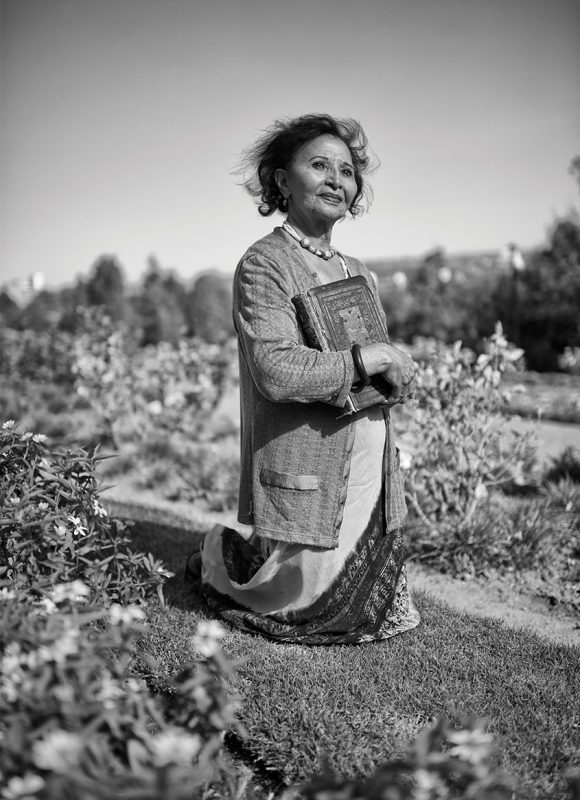PIONEER
Sophia Theresa Williams-de Bruyn

Unionist | South African Congress of Trade Unions founding member | ANC member
Born: 1938
“I felt a lump in my throat when I looked at this large army of women: dignified women, courageous women. I felt so humbled to be part of such bravery. They came in a disciplined manner, courageously climbing the steps of the Union Buildings. Indian women wore their saris, the ANC Women’s League wore their black, green and gold, there were those in their everyday wear, and there were those from rural areas in traditional dress. Imagine that colourful array of women climbing those steps …”
Who is
Sophia Theresa Williams-de Bruyn?
Former anti-apartheid activist, trade unionist and the last living leader of the 1956 Women’s March.
Professions
and Roles
Anti-apartheid activist, trade unionist, founding member of the South African Congress of Trade Unions (SACTU), and organiser of the Coloured People’s Congress, serves on the Integrity Commission and Current List Committee of the African National Congress (ANC), the ANC Women’s League (ANCWL) and the ANC Veteran’s League, Member of the National Executive Committee (NEC) of the ANCWL.
Best Known For
Williams-de Bruyn’s role as one of the leaders of the 1956 Women’s March to the Union Buildings.
Life highlights
- During her higher primary education, Williams-de Bruyn started working during school holidays at the Van Lane Textile factory. She was singled out there to solve the problems of the factory bosses, and eventually became shop steward and represented and articulated the grievances of workers.
- Williams-de Bruyn rose to become an executive member of the Textile Workers Union in Port Elizabeth.
- Williams-de Bruyn was a founding member of SACTU.
- In 1955, Williams-de Bruyn was appointed as a full-time organiser of the Coloured People’s Congress in Johannesburg.
- After the Coloured Population Act was put forward, Williams-de Bruyn was assigned by the Congress to organise women around the pass issues.
- Williams-de Bruyn was one of the leaders of the 1956 Women’s March to the Union Buildings.
- Williams-de Bruyn was exiled to Zambia, where she finally completed her high school education and was appointed the Secretary of the ANCWL, assisting Oliver Tambo at the ANC headquarters with administrative tasks.
- By 1980, she was one of the founder members of the ANC Education Council in Lusaka, and was responsible for the education and training of ANC cadres. Then she was deployed to the United Nations Institute for Namibia (UNIN) to assist in building the capacity of SWAPO cadres in administration and secretarial skills.
- In 1990, after the unbanning of the ANC, Williams-de Bruyn was tasked with moving the ANC administration from Zambia to South Africa. She was then appointed as Head of Human Resources at Shell House.
- She was later appointed as Commissioner of Gender Equality.
- She joined the Gauteng legislature in 2004, and became its deputy speaker from 2005 until 2009, before moving to national Parliament.
IN THEIR OWN WORDS
“Even though passes weren’t extended to coloured and Indian women, there was a strong sense of unity and empathy among us, because what touched them today, would touch us tomorrow. We were all marching against the same thing.”
– Sophia Williams-de Bruyn
“I felt a lump in my throat when I looked at this large army of women: dignified women, courageous women. I felt so humbled to be part of such bravery.
They came in a disciplined manner, courageously climbing the steps of the Union Buildings. Indian women wore their saris, the ANC Women’s League wore their black, green and gold, there were those in their everyday wear, and there were those from rural areas in traditional dress. Imagine that colourful array of women climbing those steps …”
– Sophia Williams-de Bruyn
IN THE WORDS OF OTHERS
“[Williams-de Bruyn is] a veteran leader of our movement and a champion of the women’s struggles.”
– Moloto Mothapo, Spokesperson for the ANC
